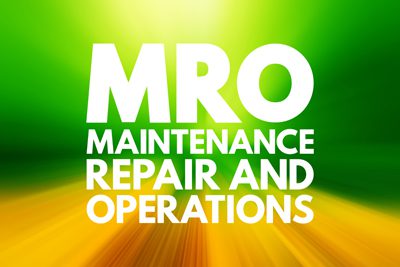 In the intricate dance of industries and businesses, the term “MRO” often takes center stage. MRO, standing for Maintenance, Repair, and Operations, is the backbone that supports the smooth functioning of a wide array of processes. In this blog post, we’ll delve into the intricacies of MRO and explore its indispensable role in sustaining operational excellence.
In the intricate dance of industries and businesses, the term “MRO” often takes center stage. MRO, standing for Maintenance, Repair, and Operations, is the backbone that supports the smooth functioning of a wide array of processes. In this blog post, we’ll delve into the intricacies of MRO and explore its indispensable role in sustaining operational excellence.
What is Maintenance, Repair, and Operations (MRO)?
Core Benefits of MRO for Operational Success
Cost Savings: Adopting effective MRO practices holds the key to substantial cost reductions in the long run. Proactive maintenance emerges as a crucial factor in early issue detection, preventing minor concerns from evolving into major problems and thereby minimizing the necessity for extensive repairs or replacements.
Enhanced Reliability: Reliability stands as the cornerstone of prosperous businesses. By incorporating MRO strategies, organizations can elevate the dependability of their equipment, cultivating a culture of consistent and trustworthy operations.
Compliance Assurance: In an era marked by stringent industry regulations, adherence takes center stage. Proper MRO practices empower companies to uphold compliance with industry standards, safeguarding operations in alignment with safety and environmental guidelines.
MRO Best Practices
Strategic Planning: Develop a comprehensive MRO plan that aligns with the overall business strategy. This involves forecasting maintenance needs, scheduling repairs, and optimizing inventory management.
Utilize Technology: Leverage technology such as Computerized Maintenance Management Systems (CMMS) to streamline MRO processes. These systems help in tracking maintenance activities, managing inventory, and generating insightful reports.
Training and Skill Development: Equip your workforce with the necessary skills and knowledge for effective maintenance and repair. Training programs can enhance the proficiency of maintenance teams, leading to quicker and more accurate problem resolution.
Final Thoughts
In the complex dynamics of the industry, MRO takes center stage, ensuring seamless operations. Embracing proactive maintenance, swift repairs, and efficient day-to-day processes allows businesses to thrive. Think of Computerized Maintenance Management Systems (CMMS) as the expert facilitator, adding precision to MRO practices. Mastering these approaches, with the support of CMMS, is a key factor for success in the competitive landscape, creating a harmonious blend of efficiency, reliability, and compliance in the business world.